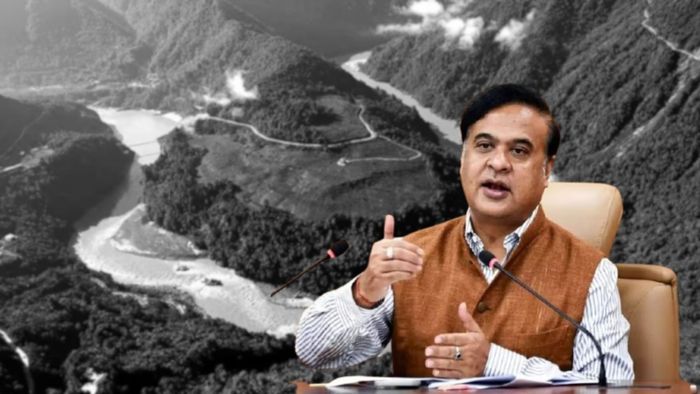‘Not immediately worried’: Assam CM downplays China’s Brahmaputra dam, cites river’s multiple sources
Assam CM says no immediate worry over China’s Brahmaputra dam. State government is monitoring closely and engaging with central authorities to protect Assam’s interests

- Jul 22, 2025,
- Updated Jul 22, 2025, 8:46 AM IST
Assam Chief Minister Himanta Biswa Sarma on July 21 said there is no immediate reason for alarm over China’s newly launched $167.8 billion hydropower project on the Brahmaputra River, despite rising concerns about its potential downstream impact on India’s northeastern states.
Speaking to the media in Guwahati, Sarma acknowledged the uncertainty surrounding the implications of the massive Chinese project but assured that the Brahmaputra is not entirely dependent on Tibetan sources. “I am not immediately worried because Brahmaputra is a mighty river and it is not dependent on a single source (of water),” he said.
The remarks come two days after Chinese Premier Li Qiang formally announced the beginning of construction at a groundbreaking ceremony in Nyingchi City, Tibet, just north of the India-China border in Arunachal Pradesh. The project will involve five cascade hydropower stations and is expected to generate over 300 billion kilowatt-hours of electricity annually, potentially serving more than 300 million people.
The sheer scale of the project — set to eclipse China’s own Three Gorges Dam — has triggered alarm among hydrological experts, environmentalists, and policymakers in India and Bangladesh, who fear it could alter water flow and increase vulnerability during times of geopolitical tension.
When asked about the potential effect on Assam, Sarma said, “It is not yet known whether it will be good or bad.” He emphasised that most of the Brahmaputra’s flow into Assam comes from Arunachal Pradesh, Bhutan, and local rainwater. “Brahmaputra gets most of its waters from Bhutan, Arunachal Pradesh, and the rainwater and other forms of water from our state itself,” he explained.
Sarma also noted that the scientific community is divided on the impact such a dam might have. “First — if Brahmaputra's flow is disturbed by China, then there may be less water and consequently biodiversity will be affected. But there is also a counter view that if less water comes, it will also act as a flood cushioning,” he said. “So, I don't know which one is correct.”
The dam is being constructed in a geologically sensitive region, close to a tectonic plate boundary where earthquakes are frequent. Located at a point where the Brahmaputra takes a dramatic U-turn from Tibet into Arunachal Pradesh, the project site is in one of the rainiest and most seismically active areas on the planet.
There are also geopolitical implications. Critics warn that China, in times of conflict, could potentially manipulate water flow to the detriment of downstream nations. India is constructing its own hydropower project on the Brahmaputra in Arunachal Pradesh, widely seen as a strategic countermeasure.
When asked whether the Indian government is engaged on the issue, Sarma said, “I am sure that the Centre must already be having a discussion with China or will have a discussion with the neighbouring country.” He added that the Centre is “a better judge on this topic” and will take appropriate steps.
The two countries currently coordinate through the Expert Level Mechanism (ELM), a dialogue platform established in 2006 to share hydrological data and address concerns about cross-border rivers. Data sharing over the Brahmaputra has periodically featured in high-level bilateral talks, including the December 2024 meeting between India’s National Security Adviser Ajit Doval and Chinese Foreign Minister Wang Yi. (PTI)